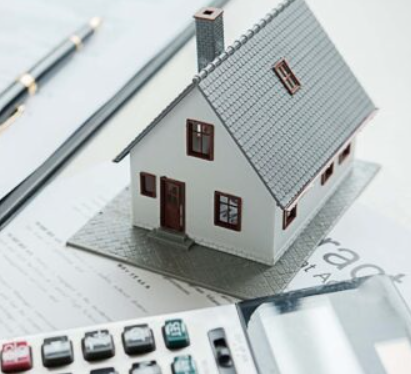Understanding Valuation Risk Factors in Property Investment

As a property investor, you may have experienced the frustration of finding a promising property, only to have the bank return with a list of valuation risk factors. It’s more common than you think, especially in a fluctuating market where the actual property values can differ significantly from what we perceive.
While your personal financial situation—such as income and debts—plays a significant role in securing a loan, lenders are also heavily concerned with risk. Understanding valuation risk factors can make a huge difference in whether or not you can secure financing.
However, it’s essential to remember that while valuations can be a challenge, they don’t dictate the outcome entirely. As an investor, your role is to assess the growth potential of a property and decide how to navigate these valuation hurdles.
What Is a Property Valuation?
In the real estate world, there’s a saying: “There is God, and then there are valuers.” As an investor, understanding why valuation risk factors matter in securing finance is crucial.
A property valuation is an impartial report conducted by a valuer to assess the market value of a property. These professionals are often hired by banks to provide unbiased appraisals. The role of the valuer is to look at past market trends, so they focus on historical data rather than future projections. Essentially, valuers are always living a few months behind the current market trends. This conservative approach is why they are often seen as risk-averse.
For lenders, the final valuation number guides how much they’re willing to lend. However, this valuation doesn’t always match the market price, which can fluctuate based on various factors. A property’s actual selling price could be higher or lower than the valuation depending on the dynamics at the time.
8 Key Valuation Risk Factors Lenders Consider
Lenders evaluate several risk factors when assessing a property. These factors are rated on a scale from one to five, influencing their decision on whether or not to approve financing.
- Location
The location of a property plays a significant role in its valuation. Properties close to essential amenities like transport hubs, schools, and business districts tend to have a lower risk rating. Prime locations tend to hold or appreciate in value better than less accessible areas. - Environmental Factors
Properties in areas prone to natural disasters, such as flooding or bushfires, are seen as higher risk. These properties often come with additional insurance challenges, which lenders consider when deciding on financing. - Property Improvements
Newer properties usually receive a better valuation compared to older ones. However, if an older property has been well-maintained and renovated to a high standard, it can still achieve a favorable rating. - Land Size
The size of the land and any potential issues related to zoning, access, or titles can affect the property’s marketability. Lenders want to be confident that there are no hidden issues that could impact the investment in the future. - Market Volatility
Lenders assess whether the market the property is in is volatile. For example, inner-city units might be considered riskier if there is an oversupply in the market, which can affect property values. - Expected Future Value
Lenders often inquire about future market trends. If there is an indication that the property’s value might decrease in the next few years, it could be seen as a higher risk. - Local Economic Conditions
Regions with limited job opportunities or dependent on a single industry, like mining or tourism, are considered higher risk. Areas with a more diverse economy tend to be more stable and less prone to downturns. - Market Sector
Lenders will also consider the property’s market sector, assessing whether it’s likely to be easy to sell in the future if needed. Properties in popular, stable sectors are less risky to lenders.
How to Avoid Buying High-Risk Properties
The key to avoiding high-risk properties lies in understanding these valuation risk factors and using them to guide your property decisions. A property with a risk rating of four or five is generally considered poor security for lenders, which could lead to limited or no financing.
To avoid purchasing a high-risk property, follow these simple tips:
- Choose a Prime Location: The location of a property is crucial. Avoid properties on busy roads or near noisy areas like train lines or airports. Aim to buy in neighborhoods with strong amenities like schools, transport links, and cafes.
- Avoid Oversupplied Areas: Investing in regions where there is an oversupply of real estate or high vacancy rates could be risky. Look for areas with strong demand and a limited supply of properties.
- Focus on Owner-Occupied Areas: Properties in owner-occupier suburbs tend to be safer investments. These areas are typically more stable because homeowners are more likely to stay long-term, even in times of crisis.
- Do Thorough Due Diligence: Always research before making any purchase. Comparing similar properties, evaluating local infrastructure, and understanding the local economy can help you make an informed decision.
Making the Right Comparisons
Before deciding on a property, consider three key aspects:
- Property Type: Compare city versus regional properties. While city properties are often more expensive and smaller, they tend to have higher rental yields and occupancy rates. Regional properties may offer more space but could experience longer vacancy periods, especially in uncertain times like the pandemic.
- Infrastructure: Look for areas with strong infrastructure growth. New roads, public transport, and facilities like schools or hospitals increase an area’s appeal and drive both capital appreciation and rental demand.
- Local Economy: Choose areas where wealthier individuals are moving in. Locations that attract professionals, tourists, and others with disposable income tend to offer more consistent growth and stability.
Final Thoughts
By understanding valuation risk factors and how lenders assess properties, you can make smarter decisions as a property investor. Avoid properties with high-risk ratings by focusing on prime locations, ensuring good infrastructure, and selecting markets with stable economies. With thorough research and careful planning, you’ll be able to avoid potential pitfalls and make profitable real estate investments.




